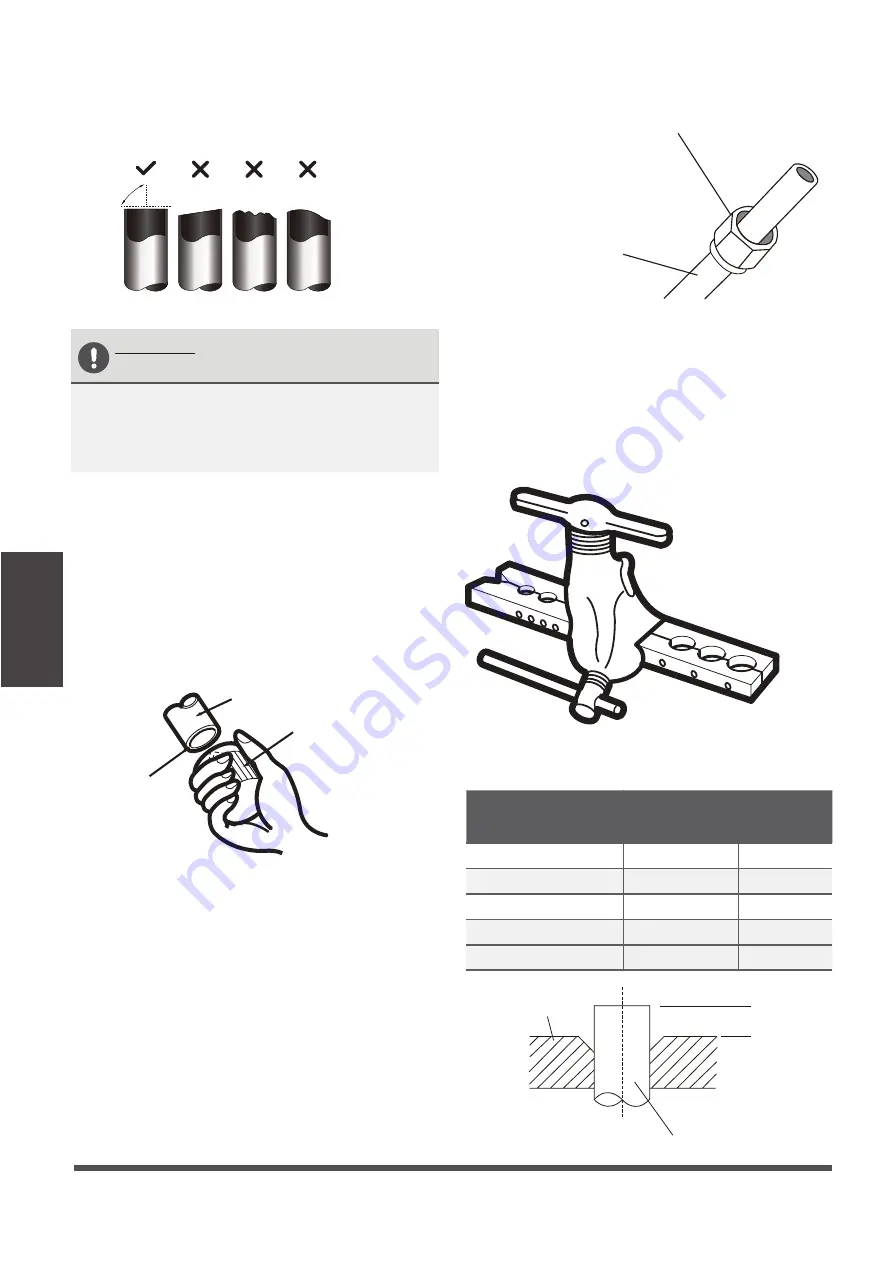
Page 26
Refrigerant
Piping
Connection
2. Using a pipe cutter, cut the pipe a little longer
than the measured distance.
3. Make sure that the pipe is cut at a perfect 90°
angle. Refer to
Fig. 5.1
for bad cut examples.
Oblique
Rough
Warped
90°
Fig. 5.1
DO NOT DEFORM PIPE
WHILE CUTTING
Be extra careful not to damage, dent, or
deform the pipe while cutting. This will
drastically reduce the heating efficiency
of the unit.
Step 2: Remove burrs
Burrs can affect the air-tight seal of refrigerant
piping connection. They must be completely
removed.
1.
Hold the pipe at a downward angle to prevent
burrs from falling into the pipe.
2.
Using a reamer or deburring tool, remove all
burrs from the cut section of the pipe.
Pipe
Reamer
Point down
Step 3: Flare pipe ends
Proper flaring is essential to achieve an airtight
seal.
1.
After removing burrs from cut pipe, seal
the ends with PVC tape to prevent foreign
materials from entering the pipe.
2.
Sheath the pipe with insulating material.
3.
Place flare nuts on both ends of pipe. Make
sure they are facing in the right direction,
because you can’t put them on or change
their direction after flaring. See
Fig. 5.3
.
Flare nut
Copper pipe
4.
Remove PVC tape from ends of pipe when
ready to perform flaring work.
5.
Clamp flare form on the end of the pipe.
The end of the pipe must extend beyond the
edge of the flare form in accordance with the
dimensions shown in the table below.
Fig. 5.2
Fig. 5.3
Fig. 5.4
PIPING EXTENSION BEYOND FLARE FORM
Outer Diameter of
Pipe (mm)
A (mm)
Min.
Max.
Ø 6.35 (Ø 0.25”)
0.7 (0.0275”) 1.3 (0.05”)
Ø 9.52 (Ø 0.375”)
1.0 (0.04”)
1.6 (0.063”)
Ø12.7 ( Ø 0.5”)
1.0 (0.04”)
1.8 (0.07”)
Ø 16 ( Ø 0.63”)
Ø 19 ( Ø 0.75”)
2.0 (0.078”)
2.2 (0.086”)
2.0 (0.078”)
2.4 (0.094”)
Flare form
Pipe
A
Fig. 5.5
Summary of Contents for CS78421-548-754
Page 37: ......












































